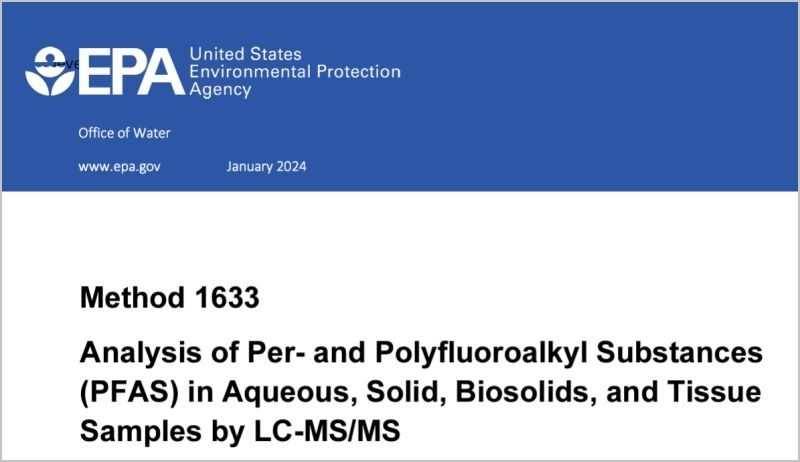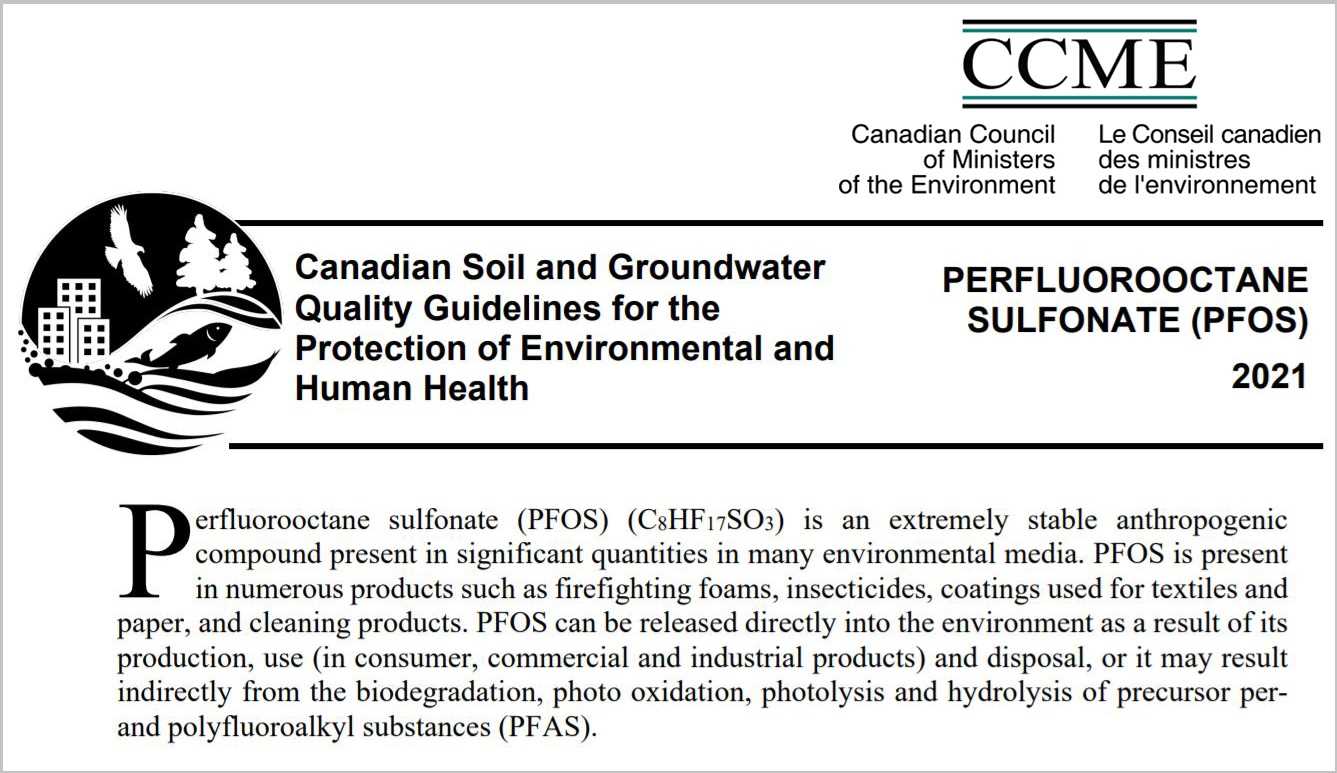EnviroMail 59 Canada
Trace-Level Analysis of PFAS in Soils by EPA Method 1633
ALS Canada now offers 17025-accredited testing for per- and polyfluoroalkyl substances (PFAS) in soils and other solids by US EPA Method 1633, an interlaboratory-validated method designed specifically for ultra-trace level PFAS analysis in complex matrices including soils, sediments, biosolids, groundwater, wastewater, surface water, landfill leachates, and animal tissues.

PFAS are a class of thousands of synthetic chemicals which have been widely used in consumer and industrial products since the 1940s. Exposure to some types of PFAS may lead to adverse health outcomes, including reproductive, developmental, hormonal, and immune system effects. Some legacy PFAS, most notably PFOA and PFOS, have been classified as carcinogenic and possibly carcinogenic to humans (respectively). Due to their persistence and widespread historical usage, concern and regulatory oversight over environmental PFAS contaminant levels are increasing.
ALS has been testing for complex suites of PFAS analytes globally under accredited methods since the late 2000s. Our global team of PFAS experts meets regularly to share research and development project outcomes and to develop best practices to keep ALS at the forefront of PFAS testing capabilities, including our adoption of Method 1633 for trace-level testing of complex sample matrices.
Benefits of Method 1633
Trace-level analysis of PFAS in solids is highly challenging due to the potential for co-extracted interferences from complex matrices, and also due to potential cross-contamination from high-level samples. EPA Method 1633 is the method of choice for complex sample matrices where ultra-trace level detection limits are required.
- Utilizes LC/MS/MS in Multiple Reaction Mode (MRM) for optimal sensitivity and selectivity.
- Isotope Dilution (ID) or Extracted Internal Standard (EIS)quantification corrects for recovery loss that may occur during sample preparation, or for instrumental calibration drift. A minimum of 24 compounds must be quantified by true Isotope Dilution using exact isotopically labelled internal standards. EIS quantification is used where exact labelled analogs are unavailable.
- Sample extracts are extensively purified to remove co-extracted interferences using both activated carbon and Solid Phase Extraction (SPE).
- Includes comprehensive requirements for chromatographic separations to minimize interferences (e.g. from bile salts, which can cause interferences or false positives for PFOS).
- Method validation and stringent Quality Control criteria have been achieved by multi-lab validation study.
ALS Canada also offers 17025-accredited testing of non-potable waters by EPA Method 1633. Please consult EnviroMail 34 for details.
Canadian Soil Criteria for PFAS
Canadian guidelines and regulatory criteria for PFAS in soil and solids are evolving, and are summarized in Table 3. ALS Canada Limits of Reporting (LORs) for soils by Method 1633 are also shown, and are at least one hundred times lower than the lowest current Canadian guidelines, supporting accurate delineation of potentially problematic PFAS residues in soils, even if future guidelines are reduced.
The first formal Canadian PFAS Soil Quality Guidelines (SQGs) were released in 2021 for PFOS, one of the most well-studied legacy perfluorinated substances. PFOS guidelines for the protection of human health were established at 0.01 mg/kg for all land use categories.
In 2022 Health Canada released updated PFAS federal Soil Screening Values (SSVs), adopting the CCME SQG for PFOS, and providing SSVs for ten other PFAS (initially released 2019). The Health Canada SSVs currently represent the most comprehensive Canadian guidelines for environmental PFAS concentrations in soil, are summarized in Table 1. Where both PFOS and PFOA are detected, Health Canada uses a Hazard Index of 1, calculated as the sum of ratios of measured concentrations of each substance divided by the SQG (for PFOS) or the SSV (for PFOA) as shown in Table 1.
Table 1. Health Canada PFAS Soil Screening Values for Federal Contaminated Sites (2022)

Source: Updates to Health Canada Soil Screening Values for Per- and Polyfluoroalkylated Substances (PFAS), April 2022.
In July 2022 the Maritime provinces adopted most of the Health Canada soil SSVs under the RBCA Environmental Quality Standards (also adopted by Nova Scotia’s Environmental Quality Standards in October 2022). In January 2023 Alberta adopted the CCME SQG for PFOS in soil.
An important new requirement was issued by the Canadian Food Inspection Agency (CFIA) on June 18, 2024, with a limit of 50 µg/kg (0.050 mg/kg) imposed for PFOS in biosolids imported or sold in Canada as fertilizers (effective October 18, 2024).
LOR Limitations for High-Level Samples
Method 1633 is intended to provide trace-level Limits of Reporting for clean or very lightly contaminated soils. As recommended by the method, ALS pre-screens all samples by LC/MS/MS to determine where dilutions are required to keep all analytes within calibration range, and to prevent instrument contamination and adverse quality impacts. If dilutions are required for grossly contaminated samples, LORs for all analytes will be increased by the applicable dilution factor. Where possible without adverse quality impacts, ALS will endeavour to maintain LORs for all PFAS analytes with regulatory limits to below the applicable standards or guidelines.
Sampling Requirements
Soil/solid samples for PFAS testing should be protected from light and shipped with sufficient ice to maintain temperature at 0-6°C from time of collection until arrival at the laboratory. For cooling of PFAS samples, ALS recommends double-bagged regular ice in sealed poly bags (e.g. Ziploc®), or HDPE bottles filled with water and frozen.
Chemical or “blue” ice should be avoided (many brands are in use and most are untested for PFAS). Avoid exposure of samples to Teflon (e.g. cap liners from other sample bottles).
To avoid contamination, special precautions are important for the collection of samples for PFAS testing due to the prevalence of perfluorinated substances in consumer products. Be aware that many consumer products can contain PFAS, including waterproof clothing and fabrics, sunscreens, lotions and cleansers, grease-proof and waterproof food packaging, fabric softeners, and cosmetics. ALS applies a 28 day hold time for PFAS in soils to meet current Canadian provincial requirements. EPA Method 1633 specifies a hold time of up to 90 days, since most PFAS have now been shown to be highly stable.
Please identify samples expected to contain high levels of PFAS on Chains of Custody (COCs).
ISO 17025 Accreditation
ALS Canada offers testing for soils/solids by EPA Method 1633 at our Waterloo, Ontario laboratory. ALS Waterloo currently holds ISO 17025 accreditation from CALA for all forty of the Method 1633 analytes. Please refer to the ALS Waterloo scope of accreditation for current status.
Table 2. Test and Sampling Details
| Test Method | PFAS in soil and solids by EPA Method 1633 |
| Instrumentation | LC/MS/MS with MRM |
| ALS Canada Method Code | E745P-T |
| Sample Containers | 120 mL HDPE (no PTFE liner) |
| Preservation | none |
| Storage Temperature | ≤ 6°C |
| Holding Time | 28 days (Canadian provincial requirements) |
| EPA 1633 allows 90 days |
Table 3. Canadian PFAS Soil Guidelines

Please contact your ALS Project Manager with any questions, or to arrange for sampling supplies.























































